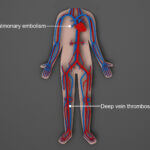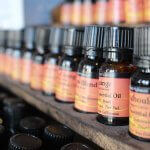
Eye asymmetry caused by thyroid eye disease (TED) can persist even after the underlying thyroid condition has resolved—this guide shares discreet cosmetic fixes and visual tricks tailored specifically for men.
I’d noticed for a while that my metabolism was working overtime—without going into detail, I was having to visit the bathroom several times a day instead of the usual once. And my doctor noticed something about my eyes that told him it was connected to my thyroid.
A specialist confirmed I had Grave’s disease and put me on a course of steroids. He also photographed my eyes at every appointment.
All I saw in the mirror was that my right eye looked “dead.”
Then, at some point after the treatment had ended, I needed a photo for my new passport; to my horror, the “dead” eye appeared as round as a saucer.
For a while, my right contact lens had been dislodging more often than usual. And tears streamed down the right side of my face whenever there was a strong breeze or wind. But the unevenness and bulging (proptosis) had never occurred to me.
My doctor sent me to an eye specialist—I had a mild case of TED (thyroid eye disease, also known as Graves’ ophthalmopathy), which can persist or worsen even after the underlying condition is resolved.
Surgery as a Fix for Eye Asymmetry
Orbital Decompression Surgery
In more severe cases of TED, orbital decompression surgery may be an option. This involves the removal of fat and/or bone around the eye socket, allowing the eyeball to retreat deeper into the orbit, which reduces protrusion. It doesn’t, however, reduce swelling.
This is why the procedure is trickier if only one eye is affected.
If the swelling naturally subsides after undergoing orbital decompression, the eye would then appear more recessed than the untreated one. This is obviously counterproductive.
Blepharoplasty
A less invasive alternative, or even an adjunct procedure, is blepharoplasty, which involves reshaping the eyelid to improve the contour and reduce puffiness. However, the disadvantages are the same—natural recovery would cause the operated eye to appear smaller than the untreated one.
Medication and Nutrition
Medication, diet, and supplements are probably a better option for fixing TED-related eye asymmetry.
Tepezza
Tepezza (teprotumumab) is the only medication specifically developed for the disease.
It works by inhibiting the IGF-1 receptor to reduce inflammation and tissue expansion behind the eyes.
In the United States, it has been FDA-approved since 2020. In Europe, including the United Kingdom, it was only recently authorized, and availability may still be limited depending on local healthcare systems and insurance coverage.
Diet
During the worst of my TED flare-up, Tepezza wasn’t yet available in my part of the world. Instead, I followed a strict anti-inflammatory diet, guided by this article from EyelidPros, which suggests that avoiding artificial sweeteners, saturated fats, and certain animal proteins may help reduce orbital inflammation in ways that conceptually mirror Tepezza’s effects.
Due to its anti-inflammatory benefits, I also began intermittent fasting, which I still practice.
Supplements
As for supplements, I had already been taking the most commonly recommended ones—selenium, vitamin D3, and omega-3—long before TED developed. Whether they helped is hard to say. Supplements can be hit or miss, and in my case, they clearly didn’t prevent the disease. On the other hand, symptoms might have been worse had I not taken them.
Always consult a qualified medical practitioner to determine what may be suitable for your individual needs.
Temporary Remedies
To temporarily reduce swelling, apply a cold compress and sleep with your head elevated.
Dryness can change the way your eyelid sits on the eye or cause you to open your eyes wider. Rectify this by staying hydrated and using artificial tears. A humidifier may also help.
Smoking
Smoking worsens TED, compromises the efficacy of treatments, and can lead to complications, including impaired vision.
The first thing to do if you have any kind of thyroid condition is give up smoking—check out this post on how I quit the habit.
Cosmetic Fixes for Eye Asymmetry
As a man who enjoys all of his masculine attributes, including male pattern baldness and facial hair, I have no interest in makeup.
But sometimes, a man’s gotta do what a man’s gotta do.
Here are a few possibilities that can be used alone or combined depending on the extent of your TED. I’ve tried them all with varying degrees of success. If it’s of any consolation, only one involves actual pigmented makeup.
And all are undetectable.
Unfortunately, this also means that none are bold enough to be effective on screen or in photos, but they do achieve an illusion of symmetry in the flesh.
Regardless of how embarrassing it is for a man to purchase cosmetics and cosmetic tools targeted at women, never borrow them for reasons of hygiene.
Cosmetics
Bronze Eyeliner
You can subtly darken the lower waterline (inner rim) of the affected eye to make it appear smaller.
Use a water-resistant, wax-based pencil product in bronze. The metallic finish will mimic the waterline’s moist appearance. I can tell you from experience that nobody will ever notice.
You could also line the upper waterline of the unaffected eye to make it appear more open.
Note, however, that this type of eyelining is not recommended by eye doctors since it can clog the meibomian glands. It certainly isn’t a good idea if the affected eye is prone to dryness, a problem I didn’t have.
To prevent infection, sharpen the pencil before use and cleanse the eye before sleeping with an oil-based cleanser and Q-tip.
Lash curling
Curling the lashes of the unaffected eye is another way of opening it. For this, you’ll need an eyelash curler and lash gel.
To use the curler, place it as close to your eyelid as possible, squeeze, count to ten, and release. This gives a direct upward curl.
To hold it in place, apply transparent eyelash gel with upward strokes.
Never use an eyelash curler after applying the gel, since this will create a kink rather than a curl. It could also cause your lashes to break if the gel has already dried.
Eyelid Tape
In my opinion, this is the most effective cosmetic fix for eye asymmetry—especially if you have hooded eyes, as I do.
In case you’ve never heard of eyelid tape, it refers to curved, adhesive strips made from fiber similar to a Band-Aid.
Simply place the strip on the crease of the lid of the unaffected eye, and it will appear more open. The thicker the strip, the greater the effect.
You could also place strips on both lids, using a thinner one on the affected eye. Experiment to find out what works best for you.
Facial Hair
At last, a more masculine solution.
If your facial hair is strong enough to grow a substantial beard or mustache, this can work as a cosmetic distraction.
A dense chevron did the trick for me, but a handlebar would probably have been better—I don’t like to draw attention to myself.
Hair
Being bald, I like to keep my dome very shiny, which works as another distraction.
If you still have enough hair to do something with, part it at the side of your smaller eye, allowing it to fall over your forehead on the side of the affected eye.
Avoid a center part, since this will only exaggerate asymmetry.
Glasses
Thick-framed glasses can obscure the eyelids.
Or, if you’re nearsighted, ask your optician whether a high-index lens on your smaller eye and a lower one on the affected eye could visually fix asymmetry.
Fixing Asymmetry During Video Calls
For my day job I have to use Microsoft Teams with the camera turned on.
The worst thing about this was that my eye looked even worse on screen than in photos. As previously mentioned, none of the above cosmetic fixes made any difference.
But lighting and camera position can.
Raise the camera above eye level and tilt it down—this softens lid asymmetry.
Place a lamp at a 45-degree angle to reduce flatness, which makes asymmetry less apparent. I can’t change the lighting arrangements at the office, but I can when working from home.
Another trick is to set the camera at an angle—I put mine on my second screen. Failing that, sitting at an angle can create the same effect.
Conclusion
Navigating the world of cosmetic solutions can feel awkward or even taboo for men. But there’s no shame in wanting to look like yourself again. Whether it’s eyelid tape, a beard or mustache, or simply adjusting your webcam angle, these easy interventions can restore not only symmetry, but confidence.
© 2025 J. Richardson
Related Posts
Disclaimer
The information provided by The Neat and Tidy Man (“we,” “us,” or “our”) on theneatandtidyman.com (the “site”) is for general informational purposes only. While we endeavor to keep the information up to date and correct, we make no representation or warranty of any kind, express or implied, regarding the completeness, accuracy, reliability, suitability, adequacy, validity, or availability of any information on the site. Under no circumstance shall we have any liability to you for any loss or damage of any kind incurred as a result of the use of the site or reliance on any information provided on the site. Your use of the site and your reliance on any information on the site is solely at your own risk.

